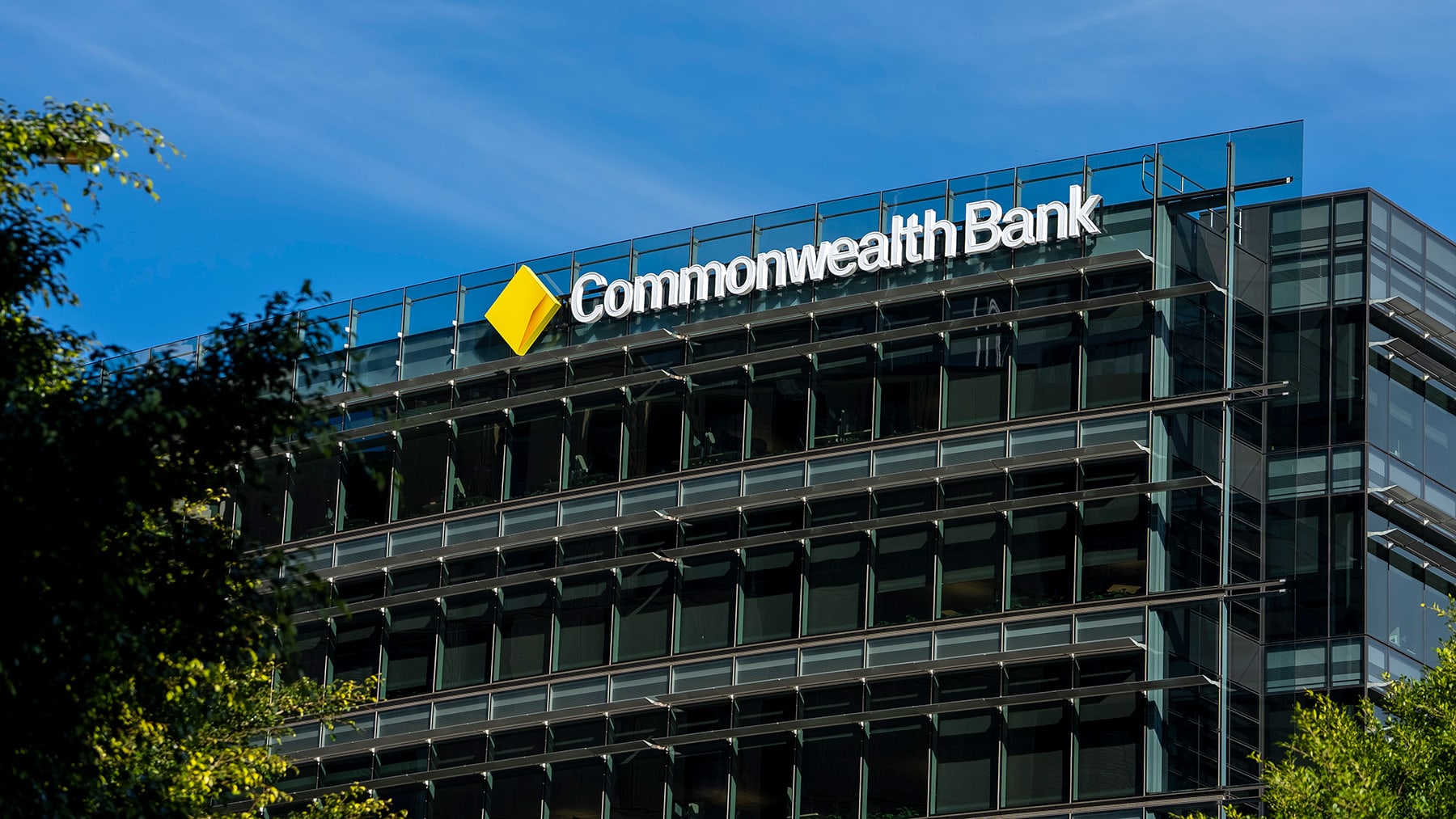Borrow
BOQ’s mortgage squeeze is a market signal: where banks will win next as competition bites
Borrow
BOQ’s mortgage squeeze is a market signal: where banks will win next as competition bites
Bank of Queensland’s shrinking home-loan book is more than a single-institution story; it’s a barometer of how Australia’s mortgage market is being rewired by broker power, non-bank agility and higher-for-longer rates. With growth shifting to commercial and asset finance, the winners will be those that re-price risk, re-shape distribution and re-platform credit with AI. The strategic play now is less about chasing volume and more about optimising return-on-risk-weighted capital while de-frictioning origination. Here’s what executives should do in the next 12 months.
BOQ’s mortgage squeeze is a market signal: where banks will win next as competition bites
Bank of Queensland’s shrinking home-loan book is more than a single-institution story; it’s a barometer of how Australia’s mortgage market is being rewired by broker power, non-bank agility and higher-for-longer rates. With growth shifting to commercial and asset finance, the winners will be those that re-price risk, re-shape distribution and re-platform credit with AI. The strategic play now is less about chasing volume and more about optimising return-on-risk-weighted capital while de-frictioning origination. Here’s what executives should do in the next 12 months.

Key implication: BOQ’s mortgage pullback is a rational response to a structurally tougher market, not an isolated misstep. Home-lending margins are compressed, acquisition costs remain elevated, and broker bargaining power is entrenched. The bank’s growth in commercial and asset finance points to where economic profit is migrating. Expect more lenders to pivot portfolios, digitise end-to-end credit, and partner with fintechs to extract unit-cost and risk advantages.
1) Industry structure: a Five Forces reality check
Australia’s mortgage market is dominated by a broker-led distribution model in which intermediated share now accounts for the clear majority of new flow—industry reporting consistently cites a high broker market share, with well over two-thirds of new loans written via brokers. That dynamic has shifted bargaining power away from smaller and mid-tier banks. For a challenger like BOQ, matching the pricing and turnaround times of the majors while paying broker commissions tightens economics.
Threat of substitutes is also rising. Non-banks have been quick to court “mortgage prisoners”—creditworthy borrowers unable to refinance due to tighter serviceability buffers—offering flexible products and faster credit decisioning. Meanwhile, regulatory settings still require conservative serviceability (buffers introduced by APRA remain a brake on refinancing velocity), keeping churn lower and lifting the cost of winning incremental share.
Add a higher-for-longer rate environment and intense price competition from majors defending scale, and the result is predictable: compressed net interest margins (NIM), rising acquisition costs, and tougher risk-adjusted returns on vanilla owner-occupier lending.

2) Portfolio economics: optimising RAROC, not just volume
The signal from BOQ is that the bank is leaning into commercial and asset finance where spreads, cross-sell potential and fee income can lift return on risk-weighted assets. This is classic RAROC optimisation: rebalance towards segments where pricing power, collateral characteristics and utilisation rates better compensate for capital and credit risk. In mortgages, the market has rewarded growth, but the current cycle rewards discipline—curating the book for margin resilience and capital efficiency.
As BOQ’s chair Patrick Allaway has acknowledged in recent commentary, parts of the home-lending portfolio were “not sustainable” amid competition, with a renewed focus on improving returns. Read that as a direction of travel for peers: tighten front-book pricing discipline, accelerate repricing on the back book where appropriate, and prioritise retention of high-quality borrowers over expensive new-to-bank acquisition.
3) Fintech and AI as the cost-of-compete threshold
Technology is now the gating factor for mortgage economics. Australia remains an attractive fintech market—Treasury’s UK–Australia FinTech Bridge highlights “supportive regulatory settings and high rate of FinTech adoption” making it an “attractive market” for innovation. The practical upside for banks is clear: automation can compress time-to-yes, reduce fraud and income verification costs, and lower rework rates through better document intelligence.
Signals of maturity are visible. In 2024, Fortiro received the FinTech Award for Best Use of AI in FinTech, underscoring the readiness of AI for document fraud detection and verification in lending flows. Technically, this blends OCR and computer vision with NLP to parse payslips, tax returns and bank statements; anomaly detection to flag tampering; and decisioning APIs to feed straight-through credit outcomes. When combined with Consumer Data Right-enabled bank-statement feeds, lenders can move from static document checks to dynamic, consented data—lifting accuracy and reducing turnaround times.
Internationally and locally, leading fintech playbooks show AI/ML can lower origination costs, boost conversion and expand fairness by assessing thin-file borrowers more effectively. The strategic edge for banks is not merely adopting tools but industrialising them: embedding model monitoring, explainability and bias controls to meet model-risk governance while driving scale benefits.
4) Competitive playbook for lenders: build, buy, partner
To compete in a broker-heavy, price-competitive market, lenders should adopt a three-lane strategy:
- Build: Modernise the credit stack—API-first origination, decision engines decoupled from core, and data pipelines using event-driven architectures. Set a 90-day target to reduce manual touchpoints per file by 30–40% through document AI and income verification automation.
- Buy: Acquire proven capabilities where speed matters (fraud detection, digital IDV, bank-statement analytics), integrating with broker CRMs and lender portals to compress application-to-settlement SLAs.
- Partner: Co-create with fintechs to stand up specialist propositions (self-employed, near-prime, green home upgrades) that price risk dynamically. Partnerships allow rapid product testing without the burden of full-stack build.
Channel strategy is equally critical. With brokers controlling demand, lenders must offer reliable SLAs, transparent credit policy and consistent pricing. Investing in broker-lender connectivity (pre-assessment tools, digital variations, status tracking) reduces abandoned applications and increases broker advocacy—vital in a market where recommendation drives origination.
5) Implementation reality: constraints, compliance, culture
Two pitfalls derail many programmes. First, data readiness: legacy cores can’t support real-time decisioning without a proper data layer. Implement a feature store for credit models, unify identity and income data, and establish golden sources to reduce reconciliation costs. Second, model risk: AI inside credit decisions demands rigorous governance—challenger models, drift detection, and human-in-the-loop controls for edge cases.
Compliance remains non-negotiable. APRA’s expectations on credit risk management, explainability of models and robust stress testing should be baked into delivery squads from day one. And talent is a choke point; initiatives like Australia’s National Innovation Visa aim to attract specialised AI and fintech skills—use them. Build blended teams (credit, data science, risk, legal) with product managers accountable for measurable cycle-time and loss-rate outcomes.
6) Outlook: what to watch over the next 12–24 months
Three scenarios frame the path ahead:
- Margin stalemate: Majors defend share, broker volumes stay elevated, and NIMs remain tight. Expect continued portfolio rotation into commercial and asset finance, selective mortgage growth in niches, and aggressive retention plays.
- Policy pivot: Any change to serviceability buffers or a softening rate path could unlock refinancing and stimulate competition. Lenders with fastest approval cycles and strongest broker connectivity will capture disproportionate flow.
- Tech-led separation: Banks that industrialise AI in origination and verification carve out 150–250 bps lower cost-to-acquire and meaningfully better time-to-yes. The rest fight on price alone—an unwinnable game for sub-scale players.
Non-banks will continue to target underserved segments, but funding-cost volatility is a structural headwind. Banks with stable deposits and modernised credit stacks can outlast the discount cycle and re-price risk on their terms.
The bottom line: BOQ’s retrenchment in home lending is a rational capital allocation decision in a market where distribution power and technology maturity dictate economics. For executives across the sector, the mandate is clear—rebalance for RAROC, digitise the credit spine, and partner where you can’t build fast enough. In this market, speed-to-right-decision beats speed-to-volume every time.

Banking
Commonwealth Bank leads consideration while People First Bank tops satisfaction in YouGov’s latest rankings
In a revealing snapshot of Australia's banking landscape, the Commonwealth Bank (CBA) has emerged as the most considered financial institution among prospective customers, according to YouGov's ...Read more

Banking
End of the easing: what a major bank’s call signals for Australian balance sheets
A major Australian bank now argues the Reserve Bank’s rate-cut run has hit a pause, resetting the risk-free rate narrative across corporate Australia. The Reserve Bank of Australia’s latest Statement ...Read more

Banking
Open banking, real returns: How an Australian brokerage turned CDR data into deal velocity
Open banking is no longer a whiteboard theory—it’s a working growth engine. This case study unpacks how a mid-sized Australian brokerage (“Pink Finance”) operationalised Consumer Data Right (CDR) data ...Read more

Banking
Open banking’s quiet revolution: how one broker’s data play rewrites speed, trust and margin
Open banking is shifting from compliance cost to commercial engine, and early adopters in Australia’s broking market are already monetising the curve. The playbook: consented bank-grade data piped ...Read more

Banking
Open banking in action: An early adopter’s playbook—and the ROI case for Australian brokers
Open banking is shifting from conference buzzword to operational backbone in Australia’s broking sector. Early adopters are using bank-grade data and AI to compress underwriting cycles, cut compliance ...Read more

Banking
Australian brokerage pedals ahead using consented data for a speedy advantage
Open banking is no longer a concept; it is an operating model shift changing how brokers originate and package credit. Australia’s early movers, backed by the Consumer Data Right (CDR) and a ...Read more

Banking
RBA’s next move: Why a November cut could reset corporate risk budgets
Australia’s unemployment rate has risen to a four‑year high, sharpening the case for another Reserve Bank easing as growth moderates. With GDP expanding 0.6% in the June quarter and 1.8% year on year, ...Read more

Banking
PayPal Open Debuts in Australia: A Unified Platform for Business Growth
Sydney, 14 October 2025 – In a significant move to bolster commerce capabilities for businesses across Australia, PayPal has officially launched its new merchant platform, PayPal OpenRead more

Banking
Commonwealth Bank leads consideration while People First Bank tops satisfaction in YouGov’s latest rankings
In a revealing snapshot of Australia's banking landscape, the Commonwealth Bank (CBA) has emerged as the most considered financial institution among prospective customers, according to YouGov's ...Read more

Banking
End of the easing: what a major bank’s call signals for Australian balance sheets
A major Australian bank now argues the Reserve Bank’s rate-cut run has hit a pause, resetting the risk-free rate narrative across corporate Australia. The Reserve Bank of Australia’s latest Statement ...Read more

Banking
Open banking, real returns: How an Australian brokerage turned CDR data into deal velocity
Open banking is no longer a whiteboard theory—it’s a working growth engine. This case study unpacks how a mid-sized Australian brokerage (“Pink Finance”) operationalised Consumer Data Right (CDR) data ...Read more

Banking
Open banking’s quiet revolution: how one broker’s data play rewrites speed, trust and margin
Open banking is shifting from compliance cost to commercial engine, and early adopters in Australia’s broking market are already monetising the curve. The playbook: consented bank-grade data piped ...Read more

Banking
Open banking in action: An early adopter’s playbook—and the ROI case for Australian brokers
Open banking is shifting from conference buzzword to operational backbone in Australia’s broking sector. Early adopters are using bank-grade data and AI to compress underwriting cycles, cut compliance ...Read more

Banking
Australian brokerage pedals ahead using consented data for a speedy advantage
Open banking is no longer a concept; it is an operating model shift changing how brokers originate and package credit. Australia’s early movers, backed by the Consumer Data Right (CDR) and a ...Read more

Banking
RBA’s next move: Why a November cut could reset corporate risk budgets
Australia’s unemployment rate has risen to a four‑year high, sharpening the case for another Reserve Bank easing as growth moderates. With GDP expanding 0.6% in the June quarter and 1.8% year on year, ...Read more

Banking
PayPal Open Debuts in Australia: A Unified Platform for Business Growth
Sydney, 14 October 2025 – In a significant move to bolster commerce capabilities for businesses across Australia, PayPal has officially launched its new merchant platform, PayPal OpenRead more








